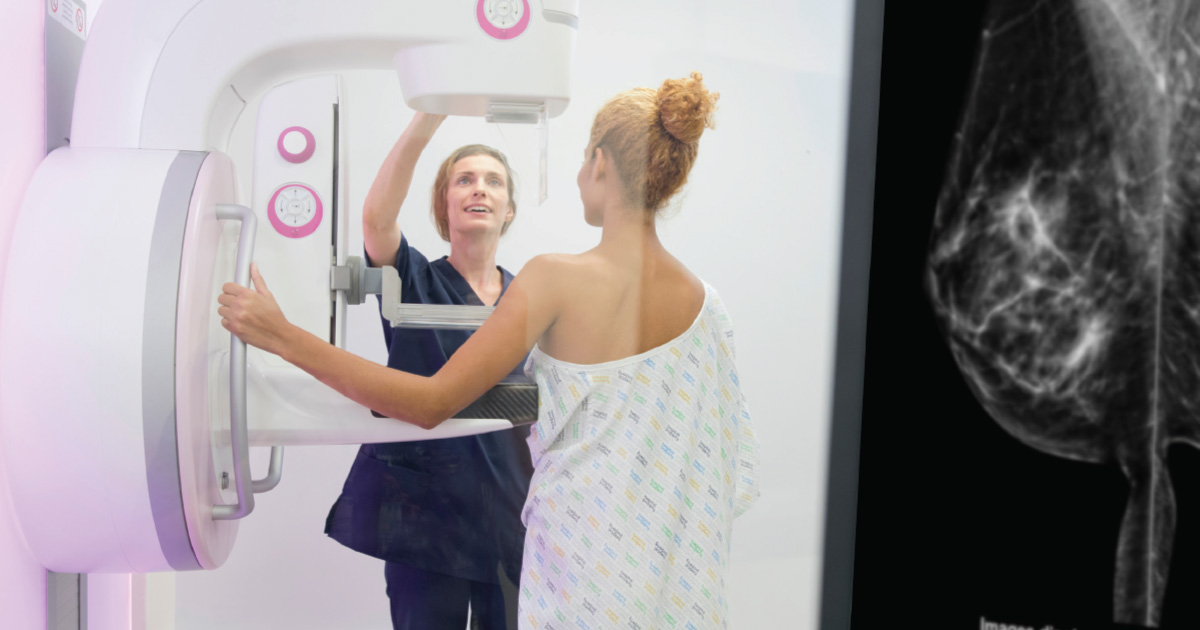
Breast Health, Cancer
Breast Cancer Risks, Symptoms, and Screenings: A Candid Consult
October is National Breast Cancer Awareness Month, and we’re sitting down with Dr. Radhika Kakarla of Axia’s Main Line OB/GYN to talk about risk levels, symptoms, and the best screening options for women today.
How prominent is breast cancer in women today? Are there risk factors certain women should be aware of?
About 1 in 8 women are diagnosed with breast cancer in the U.S. Unfortunately, the primary risk factors for breast cancer include simply being a woman and getting older. The majority of breast cancers are diagnosed in women over the age of 50, but there are additional and specific risk factors that women should be aware of. Let’s look at those risk factors in two groups: things you can’t change, and things you can.
Risk factors you can’t change include things like genetic mutations that have been inherited, your reproductive history (early menses and late menopause mean you’ve been exposed to hormones longer and raise your risk for breast cancer), having dense breasts, and a personal or family history of breast or ovarian cancer.
The risk factors you can change include things like not being physically active, being overweight, and consuming significant amounts of alcohol. Living a healthy lifestyle can always help reduce your risk, but sometimes, women can simply be unlucky – and that’s why routine screening is so important.
Does breastfeeding impact my risk for breast cancer?
It does – in a good way! Women who breastfeed have a reduced risk for developing breast cancer.
We’re always hearing about the importance of self-breast exams. How should women go about these, and what should we look for?
The American College of Obstetrics and Gynecology has now shared guidance that these don’t necessarily need to be performed and haven’t truly increased the rate of detection. However, I still advocate for women being proactive and self-aware of their bodies.
When conducting a self-breast exam, you should do so the week after your period, when you will have the least amount of hormonal influence on your breast. You should get to know your breasts’ architecture and what feels normal for you, so that you can understand if something doesn’t feel quite right when you are examining yourself. Feel for lumps, knots, or unusual developments by using the pads/flats of your three middle fingers. In addition to feeling, you should also look around and be cognizant of dimples in your breasts, as these can potentially signify breast cancer.
What breast cancer screening options are available to help me ensure my health?
Starting at age 40, you should have a mammogram performed once a year, every year. It’s preferable to go with 3D digital mammography (offered by Axia Women’s Health in many locations), which produces improved imagery over traditional mammography.
It’s also important to keep up with your annual GYN wellness visits, in which your OB/GYN provider will examine your breasts. And in general, I tell women to pay attention to their intuition. You know your body better than anyone. If something doesn’t feel right, don’t hesitate to see your provider for answers.
What is a breast cyst, and should I be worried if I have one?
A breast cyst is generally a small, harmless sac of fluid that can be found in the breast during your self-breast exam. It may feel like a scary lump, but they are rarely cancerous. While most breast cysts are benign, they should trigger a visit to your OB/GYN or be followed up with attention, as they have the potential to grow large and could eventually require attention from a breast surgeon.
Should I go for my mammogram sooner if my mother or grandmother had breast cancer?
Interestingly enough, only about 8% of cancers are genetic (inherited) breast cancers. In the past, providers would recommend women with that family history to get a mammogram 10 years before the age of the family member’s diagnosis. However, we often recommend genetic testing so that women can know for sure if they carry the BRCA1 or BRCA2 mutations.
Women with the BRCA mutations have between a 45-65% increased risk of developing breast cancer before age 70. These women should indeed have a mammogram sooner, and should see a genetic counselor to better understand their specific risks.
Should breast pain cause me to be concerned about breast cancer?
Any type of pain that is consistent (not going away) should be evaluated by your OB/GYN. However, breast pain does not necessarily mean you have breast cancer! Pain that is cyclical is likely more hormonal than a precursor to cancer. Breast pain could be attributed to many things – from simple hormonal changes to fibrocystic disease, or clogged ducts and mastitis if you are breastfeeding.
Have you had your mammogram this year? Find a breast health imaging location near you.
 Author: Radhika Kakarla, MD, FACOG, a senior physician with Main Line OB/GYN
Author: Radhika Kakarla, MD, FACOG, a senior physician with Main Line OB/GYN
To schedule a consult with Dr. Kakarla or one of her teammates at Main Line OB/GYN, call (610) 688-3744












